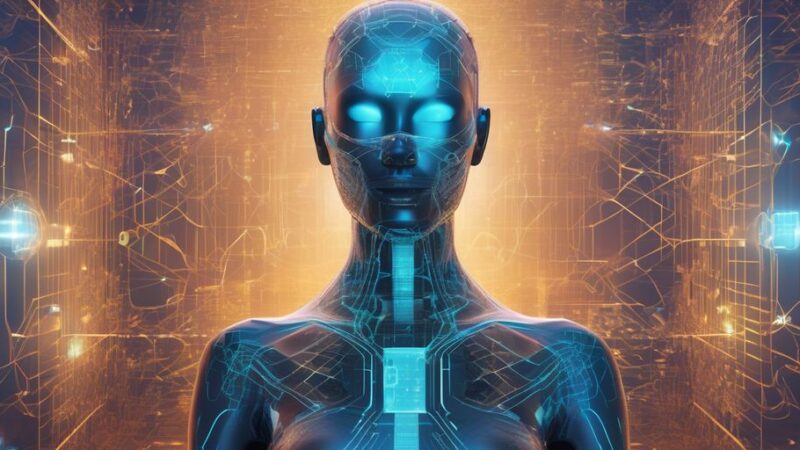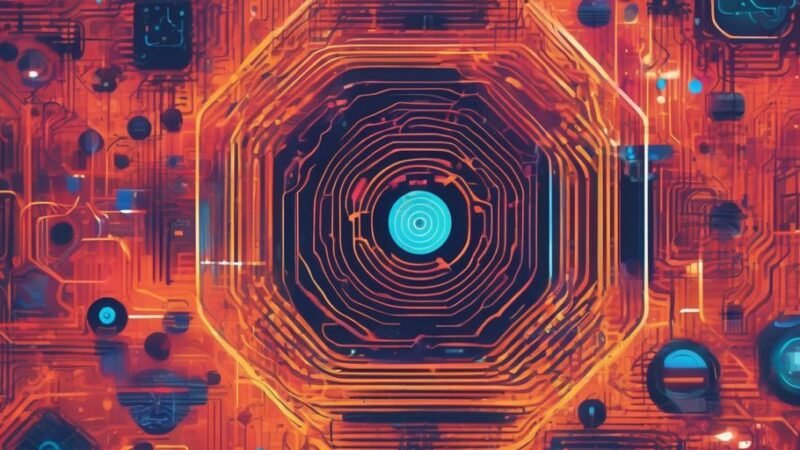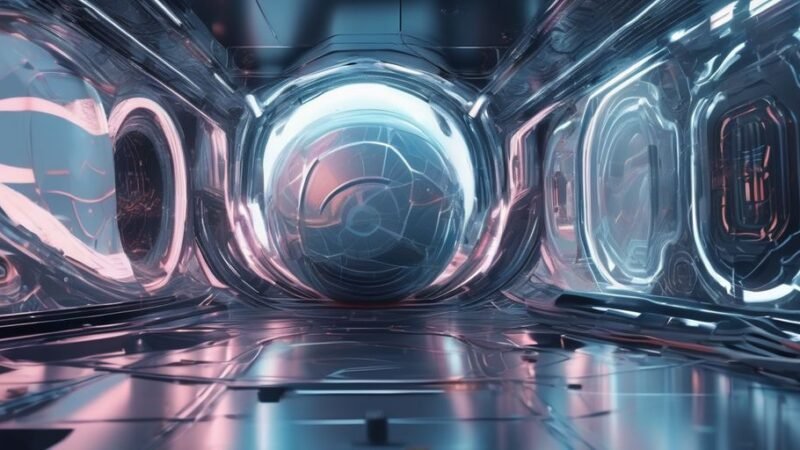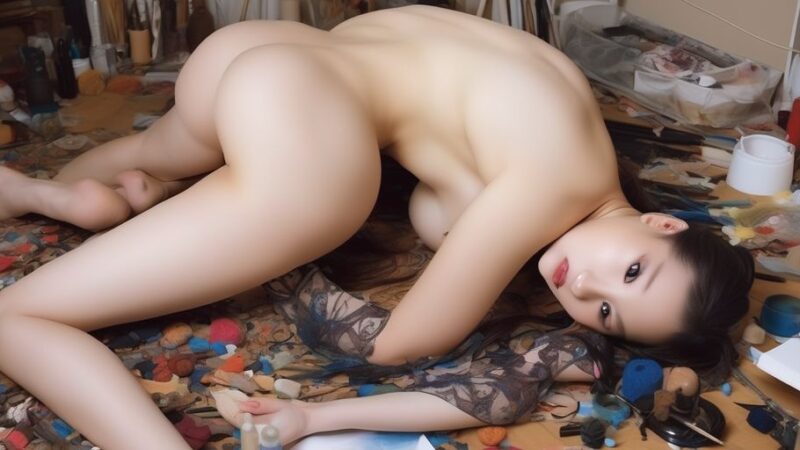AI Nude Generators: Innovative Tech or Ethical Nightmare?

AI nude generators, a subset of AI image generators, have sparked a heated debate between technological innovation and ethical concerns. These tools, capable of producing nude imagery through artificial intelligence, straddle a fine line between creative freedom and potential misuse. This article delves into the multifaceted implications of AI nude generators, exploring their operation, impact, and the controversies they ignite.
Key Takeaways
- AI nude generators can produce photorealistic and stylized NSFW images, including those resembling specific individuals, raising concerns over non-consensual pornography.
- There is a significant risk of these technologies being used to generate child abuse imagery, with instances already noted in the darker corners of the internet.
- The potential for AI nude generators to replace traditional artists and adult content creators has sparked fears about economic impacts and ethical violations.
- Legal frameworks lag behind the rapid development of AI technologies, necessitating updated regulations to address new challenges such as content moderation and privacy.
- While AI-generated art can inspire creativity, the lack of safeguards and ethical considerations in current models poses serious risks to society.
Understanding AI Nude Generators
What Are AI Nude Generators?
AI nude generators are a type of generative artificial intelligence that creates realistic images of human nudity. These tools leverage complex algorithms to synthesize images that can range from artistic nudes to explicit content. The technology has sparked significant debate regarding its applications and implications.
How Do They Work?
These generators utilize machine learning models, particularly Generative Adversarial Networks (GANs), to produce images. The process involves training these models on vast datasets of images to learn and replicate various artistic styles and human forms. This training allows the AI to generate new images based on input parameters set by the user.
Current Uses in the Industry
AI nude generators are currently used in several sectors, including entertainment, art, and adult content creation. Their ability to create detailed and customizable images has made them particularly popular in areas where traditional photoshoots are either impractical or unethical. However, their use raises significant ethical questions, particularly when the images resemble specific individuals without their consent.
Ethical Concerns and Challenges
Potential for Non-Consensual Pornography
The use of AI in generating nude images, such as those created by Makenude AI, raises significant ethical concerns. The potential for these technologies to be used for creating non-consensual pornography is alarming. This misuse can lead to severe emotional and psychological impacts on the victims.
Risk of Generating Child Abuse Imagery
AI technologies that generate images can inadvertently or maliciously be used to create child abuse imagery. This represents one of the most disturbing ethical challenges associated with AI image generators. The risk is compounded by the difficulty in effectively moderating such content to prevent its spread.
Content Moderation Issues
Ensuring effective content moderation in platforms hosting AI-generated images is a daunting task. The complexity of distinguishing between consensually uploaded and non-consensually generated images complicates the enforcement of content policies. This challenge necessitates the development of more sophisticated AI-driven moderation tools that can better detect and manage inappropriate content.
Impact on Art and Creativity
Influence on Traditional Art Forms
AI nude generators, while innovative, pose significant questions about their influence on traditional art forms. The electronic synthesizer did not kill music, and photography did not kill painting; similarly, AI art is not the end of human creativity. However, the integration of AI into the art world is complex, affecting perceptions of value and originality in traditional artworks.
AI as a Tool for Artists
AI technologies offer tools that can enhance the creative process for artists. They serve as a starting point or a sketch tool, providing suggestions that the artist can then refine and expand upon. This partnership between AI and artists can lead to increased productivity and new forms of artistic expression.
Threats to Professional Artists
The advent of AI in art poses a real threat to the livelihood of professional artists. It’s not just about the creation of art but also about the economic implications. AI-generated art can be seen as a blend of stolen works, which raises ethical concerns about the originality and ownership of art pieces. This could potentially devalue the work of traditional artists, making it harder for them to sustain their careers.
Legal and Regulatory Landscape
Existing Laws Governing AI and Privacy
Current legal frameworks struggle to keep pace with the rapid development of AI technologies, including AI nude generators. Existing laws often do not explicitly address the unique challenges posed by AI, leading to potential privacy violations and misuse of personal data.
Challenges in Enforcing Regulations
Enforcement of existing laws is complicated by the global nature of the internet and AI technologies. Jurisdictional discrepancies and the technical complexity of AI systems make it difficult to hold entities accountable, resulting in a regulatory gap.
Need for New Legal Frameworks
The dynamic landscape of AI technology necessitates the development of new legal frameworks that are robust enough to address future challenges. Stakeholders, including governments and tech companies, must collaborate to establish regulations that protect privacy while fostering innovation.
Technological Safeguards and Solutions
Advancements in Content Filtering
Advanced algorithms are now integral to content filtering systems, enhancing their ability to distinguish between permissible and impermissible content. These systems are crucial in preventing the misuse of AI capabilities in generating non-consensual imagery. For instance, new safeguards have been implemented by major tech companies to enhance the safety and responsibility of their AI tools.
Role of AI in Enhancing Safety
AI not only creates digital content but also plays a pivotal role in safeguarding the digital ecosystem. By continuously learning and adapting, AI systems can preemptively identify and mitigate potential abuses, ensuring a safer online environment. This proactive approach is essential in maintaining trust and integrity within digital platforms.
Community-Driven Standards and Practices
The adoption of community-driven standards and practices is vital for the responsible deployment of AI technologies. These standards often emerge from collaborative efforts involving various stakeholders, including technologists, ethicists, and end-users. Such inclusive practices not only foster transparency but also ensure that the technology adheres to ethical norms and societal values.
Public Perception and Media Influence
Media Coverage of AI Nude Generators
The media plays a pivotal role in shaping public perception of AI nude generators. Often sensationalized, coverage can either alarm or fascinate the public, influencing the broader narrative around these technologies. Bold claims and dramatic headlines often overshadow nuanced discussions about the ethical implications and the technology’s potential benefits.
Public Concerns and Misconceptions
Public concerns largely revolve around privacy, consent, and the potential misuse of AI in creating non-consensual imagery. Misconceptions about the capabilities and limitations of AI technologies can exacerbate fears, leading to heightened skepticism and resistance. It is crucial to address these concerns through transparent and informative communication to foster a more informed public opinion.
Influence on Consumer Behavior
Consumer behavior is significantly influenced by media portrayal and public sentiment. As perceptions shift, so do consumer habits, which can be seen in the varying degrees of acceptance and resistance to new technologies. Understanding these dynamics is essential for developers and policymakers to navigate the complex landscape of technology adoption.
Future Prospects and Developments
Potential Technological Innovations
The landscape of AI nude generators is poised for significant technological advancements. Innovations could include enhanced realism, ethical safeguards, and more personalized content creation. These developments promise to expand the capabilities and applications of AI in the art and media industries.
Ethical Considerations for Future Models
The integration of ethical considerations into AI development is crucial. Developers must prioritize transparency, consent, and privacy to mitigate risks associated with non-consensual content and potential misuse. This focus will help align future AI technologies with societal norms and legal standards.
Balancing Innovation with Responsibility
The challenge lies in balancing technological innovation with ethical responsibility. Stakeholders must collaborate to establish guidelines that ensure AI tools are used responsibly. This includes ongoing monitoring and the adaptation of regulations to keep pace with technological changes. The dialogue between technology creators, legal experts, and the public is essential for fostering a responsible approach to AI development.
Conclusion
The advent of AI nude generators presents a complex blend of innovation and ethical challenges. While these tools showcase the remarkable capabilities of AI in image generation, they also raise serious concerns about privacy, consent, and the potential for misuse. The technology’s ability to generate non-consensual pornography and images of child abuse is particularly alarming. As we stand at the crossroads of technological advancement and ethical responsibility, it is crucial to implement stringent regulations and ethical guidelines to ensure that AI development aligns with societal values and protects individuals from harm. The future of AI in art and image generation must be navigated with caution, prioritizing human dignity and safety above all.
Frequently Asked Questions
What are AI Nude Generators?
AI nude generators are advanced artificial intelligence tools designed to create photorealistic nude imagery based on input data. These tools can generate both photorealistic and anime-style images, including those resembling specific individuals, known as non-consensual pornography.
How do AI Nude Generators work?
These generators use complex algorithms and machine learning models trained on vast datasets of images to synthesize new images that match given prompts. The technology identifies patterns and elements from the training data to create visually similar outputs without direct copying.
What are the ethical concerns associated with AI Nude Generators?
Key ethical concerns include the potential for generating non-consensual pornography, the risk of creating child abuse imagery, and the broader implications for privacy and consent. The technology poses significant challenges in content moderation and raises questions about the moral responsibilities of developers and users.
Can AI Nude Generators affect traditional artists and adult content creators?
Yes, AI art generators, including those for nude images, pose a threat to traditional artists and adult content creators by potentially serving as a cheaper alternative. This can impact the livelihood of professional artists and complicates the issues surrounding sex work and content creation.
What legal measures are in place to regulate AI Nude Generators?
Currently, the legal framework surrounding AI-generated content is evolving. Some laws govern privacy and data use, but specific regulations addressing AI-generated nude imagery are still underdeveloped. There is a pressing need for updated legal frameworks to address these new technological capabilities.
How can the negative impacts of AI Nude Generators be mitigated?
Mitigating the negative impacts involves implementing stringent content moderation policies, developing technological safeguards like advanced content filtering, and fostering community-driven standards. Additionally, raising public awareness about the ethical and legal implications of using such technologies is crucial.






